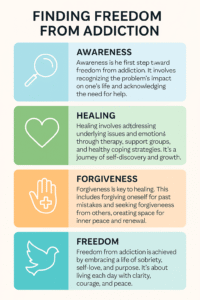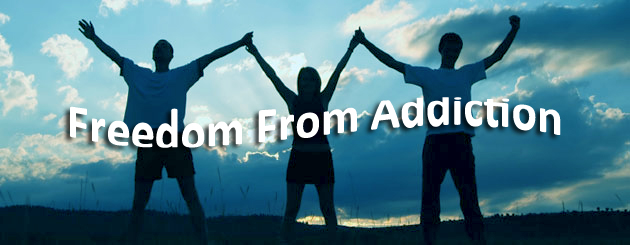The adventure toward freedom from addiction is a deeply personal and winding path. It’s not something I ever imagined I’d travel, but learning the art of letting go has been one of the most powerful things I’ve done for myself. For anyone stuck in the struggle, stepping away from addiction might seem almost impossible at first. But piecing together small changes and new habits leads to lasting change. I want to walk you through what helped me break free and build a life that finally felt like mine.
What Addiction Looked Like for Me
I spent a long time in denial. My days started and ended with the pull of my addiction, whether that was pouring a drink or reaching for something else to numb the stress. Even when the negatives started building up, like lost sleep, frayed relationships, or work stress, I still told myself I was in control. The hardest part early on was recognizing that addiction isn’t just about a substance or a habit. For me, it became a pattern of avoiding pain and chasing comfort, even if it made things worse in the long run.
Understanding addiction as a kind of tangled coping mechanism really helped me see why quitting wasn’t so straightforward. I wasn’t just trying to stop a behavior; I was learning to sit with uncomfortable feelings without my old crutches. That realization was pretty crucial for the rest of my recovery process.
Finding My Reasons to Let Go
Knowing that I wanted freedom from addiction wasn’t consistently enough. I needed real motivation, something worth all the hard work of changing. For me, it came down to a few turning points:
- Health. I started noticing how much worse I felt physically and mentally. Clarity, sleep, and energy became things I longed for.
- Relationships. Watching people I cared about worry or pull away hurt way more than I expected. I wanted to show up for them again.
- Self-respect. I got tired of feeling let down by my own choices. I wanted to see what I was capable of without the constant distraction of addiction.
There wasn’t one single moment when I decided to change. It was like a series of small wake-up calls that slowly built up until letting go seemed less scary than staying stuck.
How I Started Letting Go
Quitting is tough, and I made plenty of false starts. What made a difference for me was breaking it into simple, manageable steps and admitting I needed support. Here’s what got me moving in the right direction:
- Reaching out for help: The stigma around addiction can feel massive, but getting honest with a loved one or even a counselor felt like lifting a hundred pounds off my shoulders. I also checked out groups like SMART Recovery and found their nonjudgmental vibe helpful.
- Building new routines: So much of my day was shaped around my addiction, so swapping in healthier habits—walks, journaling, even basic chores—started to fill the gaps. It felt weird at first, but the structure helped.
- Setting tiny goals: Instead of promising myself dramatic overnight change, I focused on making it 24 hours, then a week, and then building from there. Each small win made the next one easier.
Over time, these steps turned what seemed impossible into something I could manage. I learned that reaching out doesn’t have to be scary. Friends, family, or even online forums can offer understanding and advice. Even sharing your story anonymously can be a huge relief and help connect you to people who have walked a similar path.
Challenges I Ran Into (And How I Handled Them)
Anyone making this choice is bound to hit a few roadblocks. The mental pullback toward my addiction was real, especially during stressful days or when I felt alone. Here are a few of the toughest challenges I faced and some ideas for handling them:
- Cravings: When urges spiked, I learned distraction worked pretty well. Texting a friend, grabbing a snack, or stepping outside for fresh air made challenging moments pass quickly.
- Triggers: Certain situations or feelings were automatic triggers. Once I spotted my patterns, like stress after work, I started planning other ways to handle those moments, such as calling someone or heading to the gym instead.
- Slipups: I had setbacks, and the shame could be overwhelming. Instead of throwing in the towel, I wondered what led up to it and how I could handle it differently next time. Forgiving myself sped up the bounce back every time.
Cravings: What Helped Me Ride Them Out
Urges felt less powerful when I remembered they come and go like waves. Sometimes they’re intense, but they’re not permanent. Pausing to acknowledge a craving, reminding myself it wouldn’t last forever, and using healthy distractions made them more tolerable. Sometimes I’d write out what I felt, which made things less overwhelming and gave me a new perspective the next time a craving rolled around.
Triggers: Redefining Old Patterns
Certain places, people, or even songs hit me with old memories. Not all triggers could be avoided, so I started creating new routines in those situations. Changing up my after-work habits—maybe with a run or a hobby—helped break the automatic link between stress and addiction. Over time, those new habits made the old triggers lose their grip.
Slipups: Learning, Not Quitting
Most people slip up at some point. When I did, I made a point to discuss it honestly with someone I trusted instead of hiding it. That kept me from bottling things up and starting the cycle again. Each misstep became a lesson, not a defeat. Reaching out reminded me I’m not alone, and progress isn’t about perfection. It’s about learning and moving forward.
New Ways to Find Meaning and Joy
Recovery is a lot more than just quitting. For me, it’s been about stumbling upon what brings joy or meaning, without needing to numb out. I tried different hobbies, like hiking, painting, and cooking new meals, and learned to enjoy moments that used to slip past unnoticed.
Replacing the old rush of addiction with smaller, steadier positives made a big difference. Sometimes that meant appreciating a walk outside or reconnecting with friends, with no agenda but catching up. I also got into podcasts and books on recovery, which made me feel less alone and offered new ideas for staying balanced. Giving space to little pleasures and celebrating progress, no matter how small, has become one of the best parts of sober life.
Practical Advice for Building Lasting Change
Getting free from addiction doesn’t happen in a straight line, and everyone’s path looks a little different. Here are some practical tips based on what worked for me and others I’ve met in recovery:
- Get support: Whether that’s a counselor, a peer support group, or a few close friends, having people to check in with is super important.
- Find healthy outlets: Physical activity, creative projects, or volunteering can fill the empty spots addiction leaves behind and build new confidence.
- Make a plan for triggers: Write out what situations trip you up and how you’ll handle them differently next time. Even having a list of distractions ready can help.
- Track your progress: Journaling or using an app to log your days can help you spot wins and patterns over time.
- Practice self-compassion: Treat yourself with the same kindness you’d offer a friend going through a tough time.
- Stay patient with setbacks: Change takes time. A single mistake does not wipe out what you’ve achieved. Use setbacks as stepping stones for your growth.
If you’re considering seeking extra resources, look for hotlines or local organizations in your area. Many cities have free or low-cost services that make the first steps more manageable than expected.
Common Questions from Others Starting Out
People just starting their own adventure ask many of the same questions I had initially. Here are a few I run into a lot:
Question: Do I need to cut off my addiction right away, completely?
Answer: Some people quit cold turkey, while others taper or get medical help. Go with what keeps you safe and supported; the important thing is making a change, not how fast you move.
Question: How do I handle friends or family who still use?
Answer: This one is tricky. If someone’s habits put your recovery at risk, consider setting boundaries or taking some space early on. Connecting with new people who support your goals helps too.
Question: Will cravings ever go away?
Answer: For many people, cravings fade over time but might pop up unexpectedly. The more you practice riding them out, the easier they get to manage.
Question: Is it normal to feel lost without my old habits?
Answer: Absolutely. Letting go of something that’s been in your life for a long time can leave a big void. Filling that space with new routines, interests, and supportive people makes the transition smoother. Everyone’s adjustment period looks slightly different, but feeling lost initially is part of building something new.
What Freedom Means to Me Today
Letting go of addiction gave me something I never expected: a chance to know and trust myself truly. There are still ups and downs, but the heavy fog of addiction has cleared, and with that comes room for hope and growth. For anyone considering taking that first step, I can honestly say it’s worth seeing what your life can become. The kind of freedom you gain isn’t just about quitting; it’s about creating a life that feels real and worth showing up for every day.
Video: Can You Really Break Free From Addiction?

